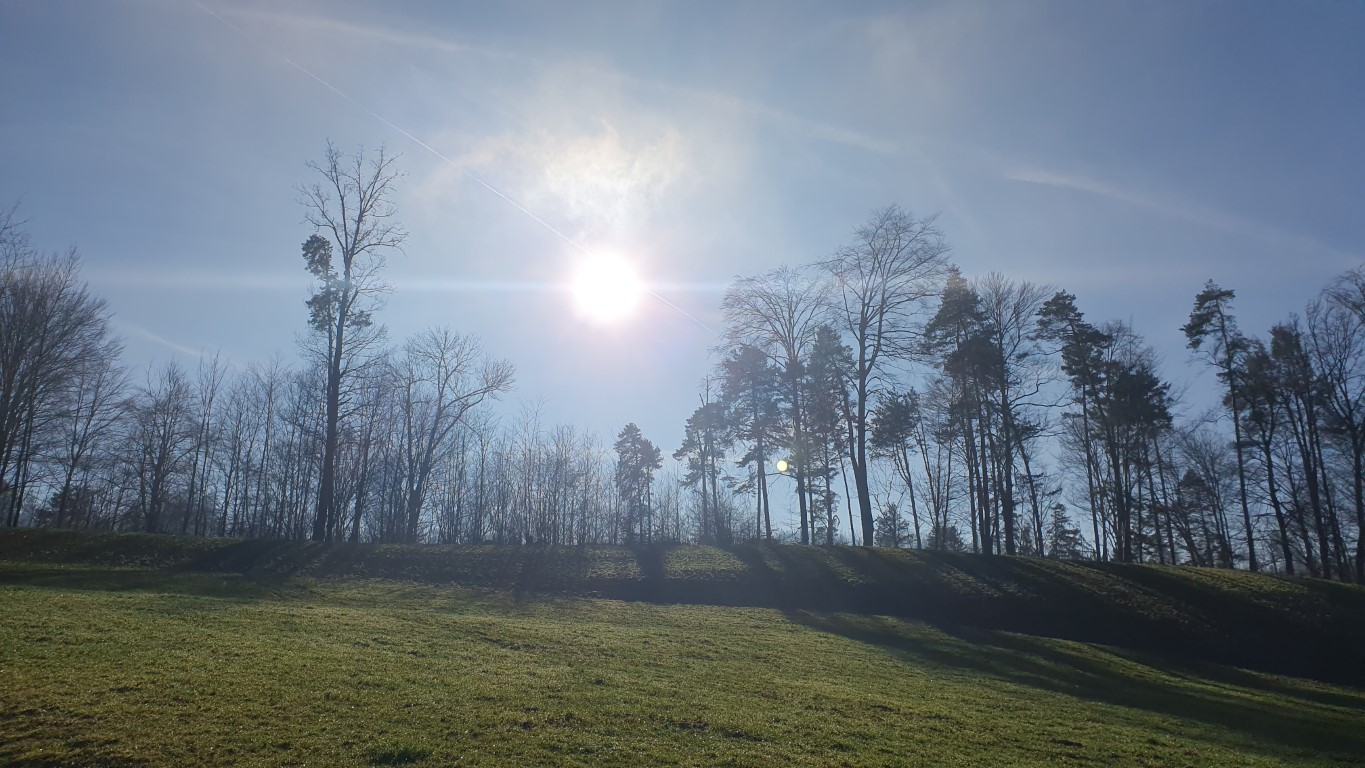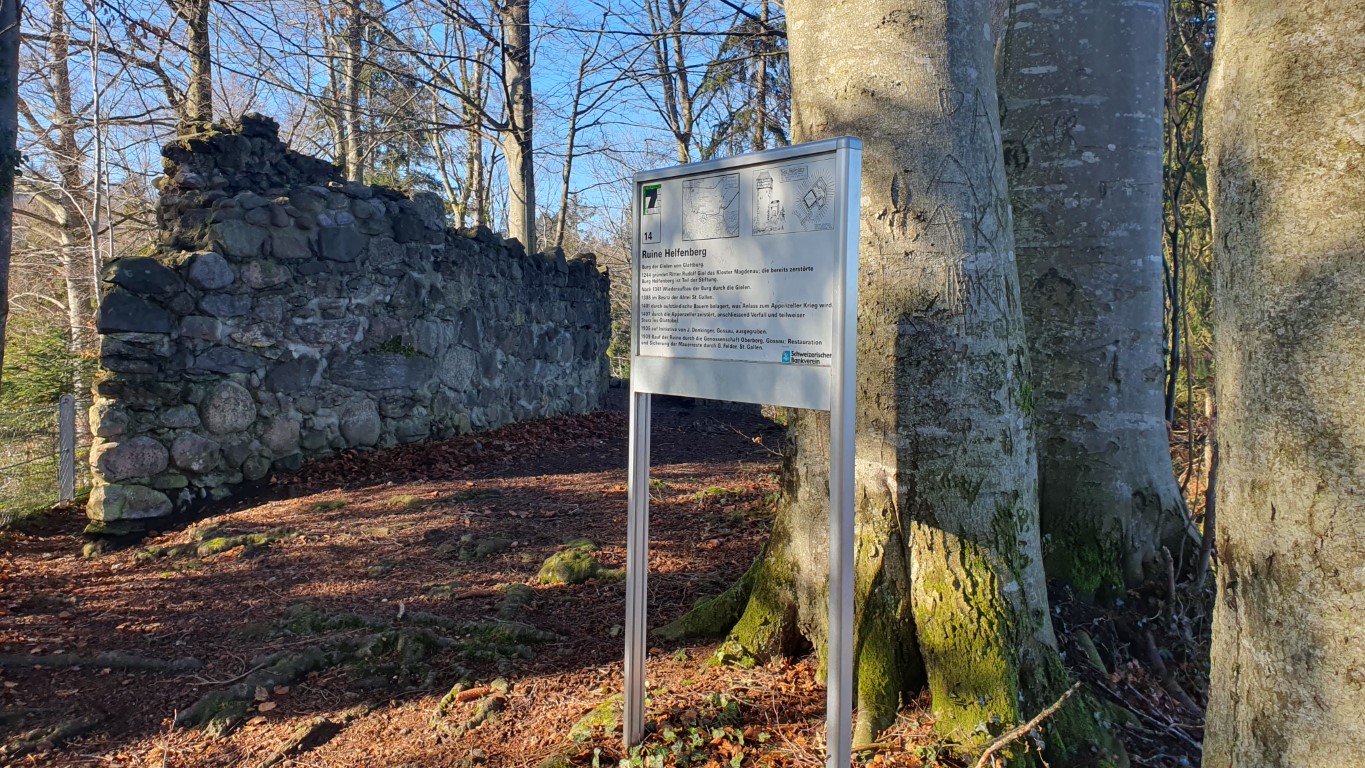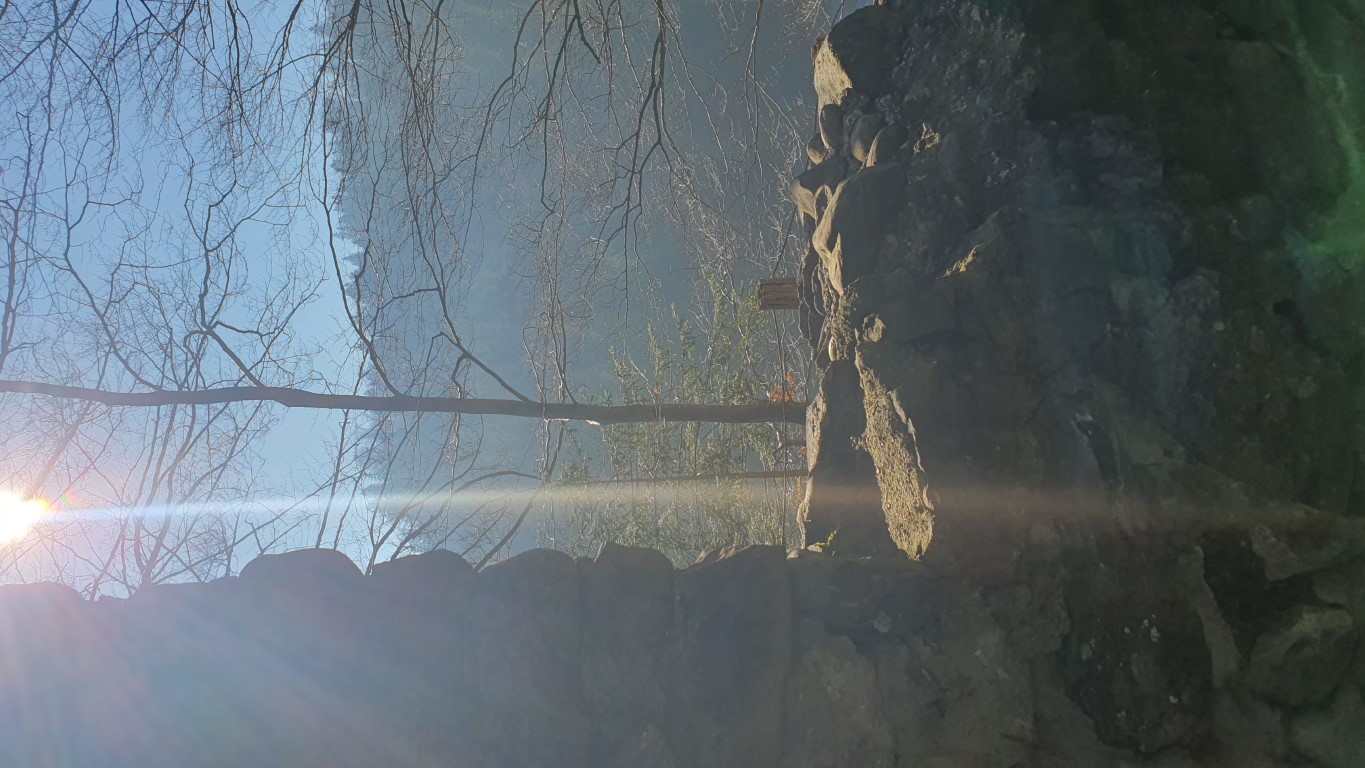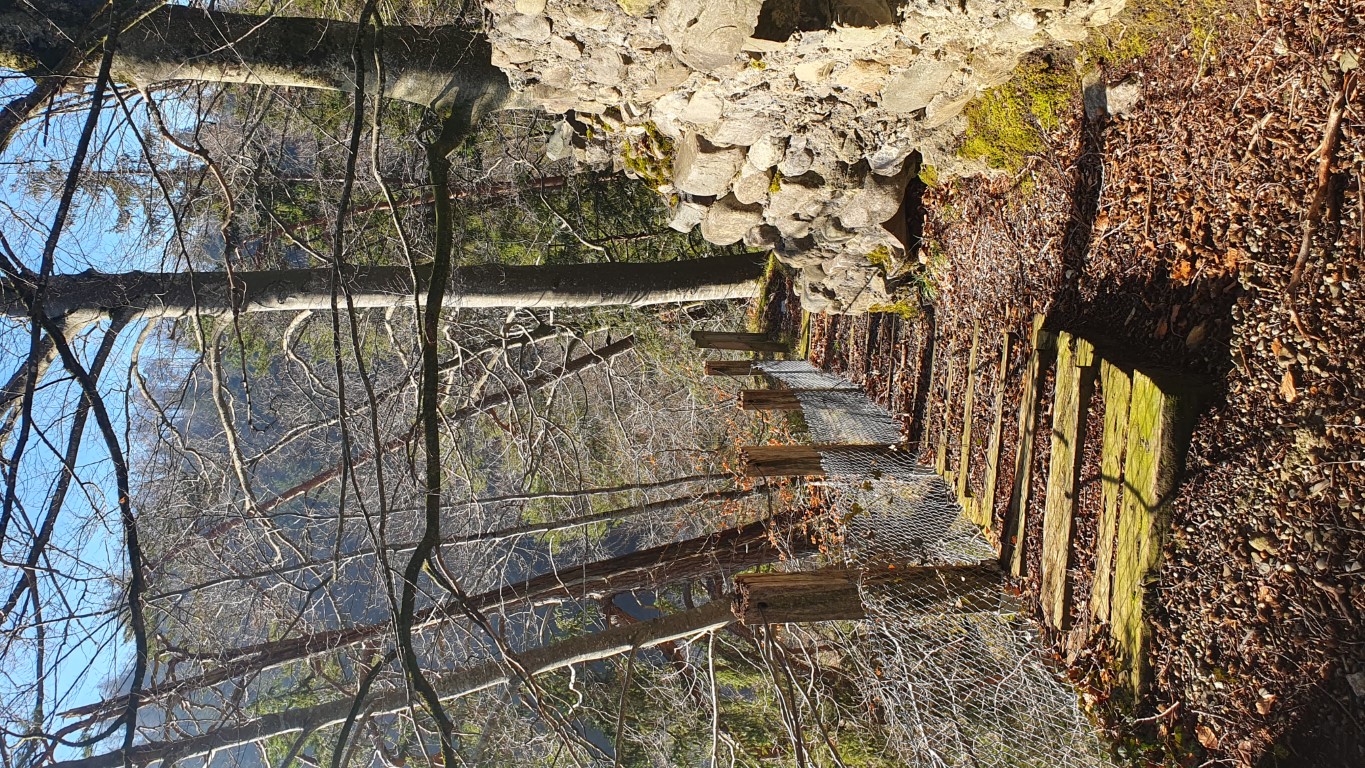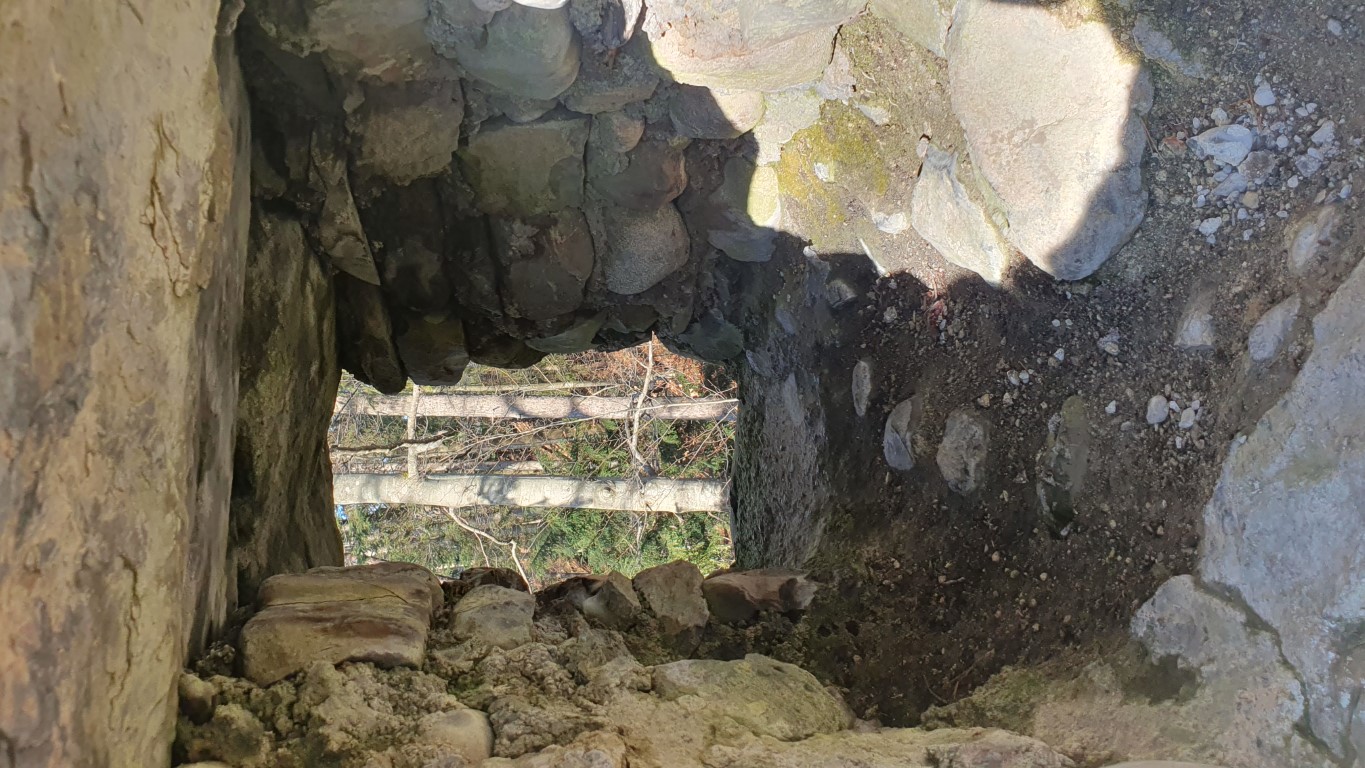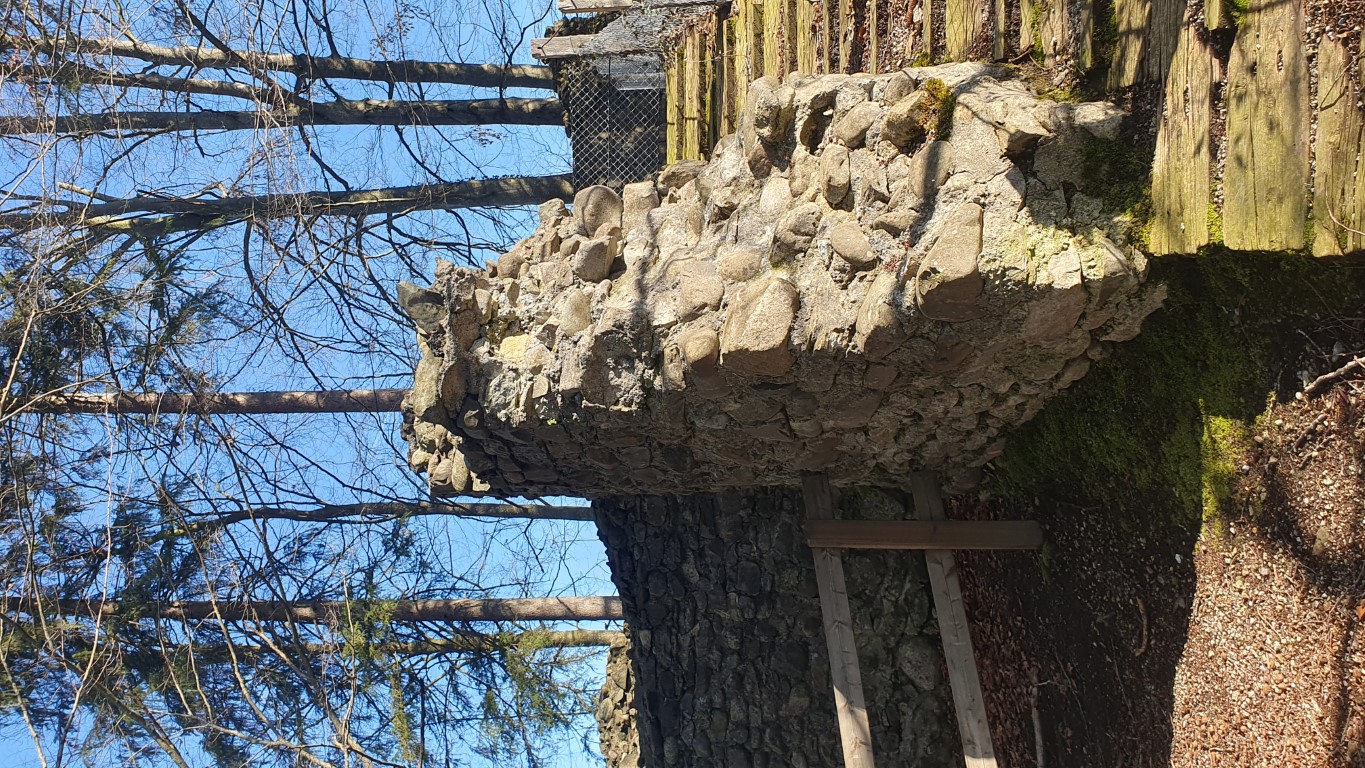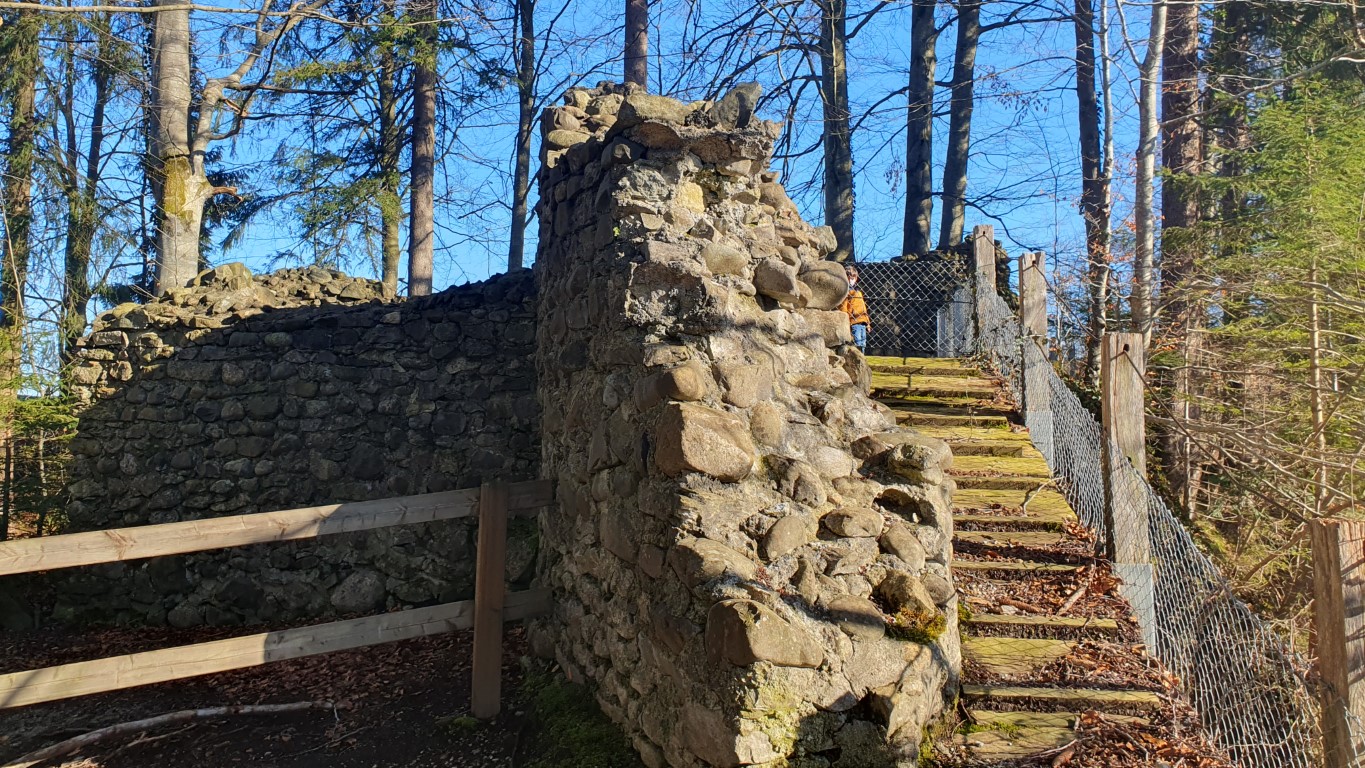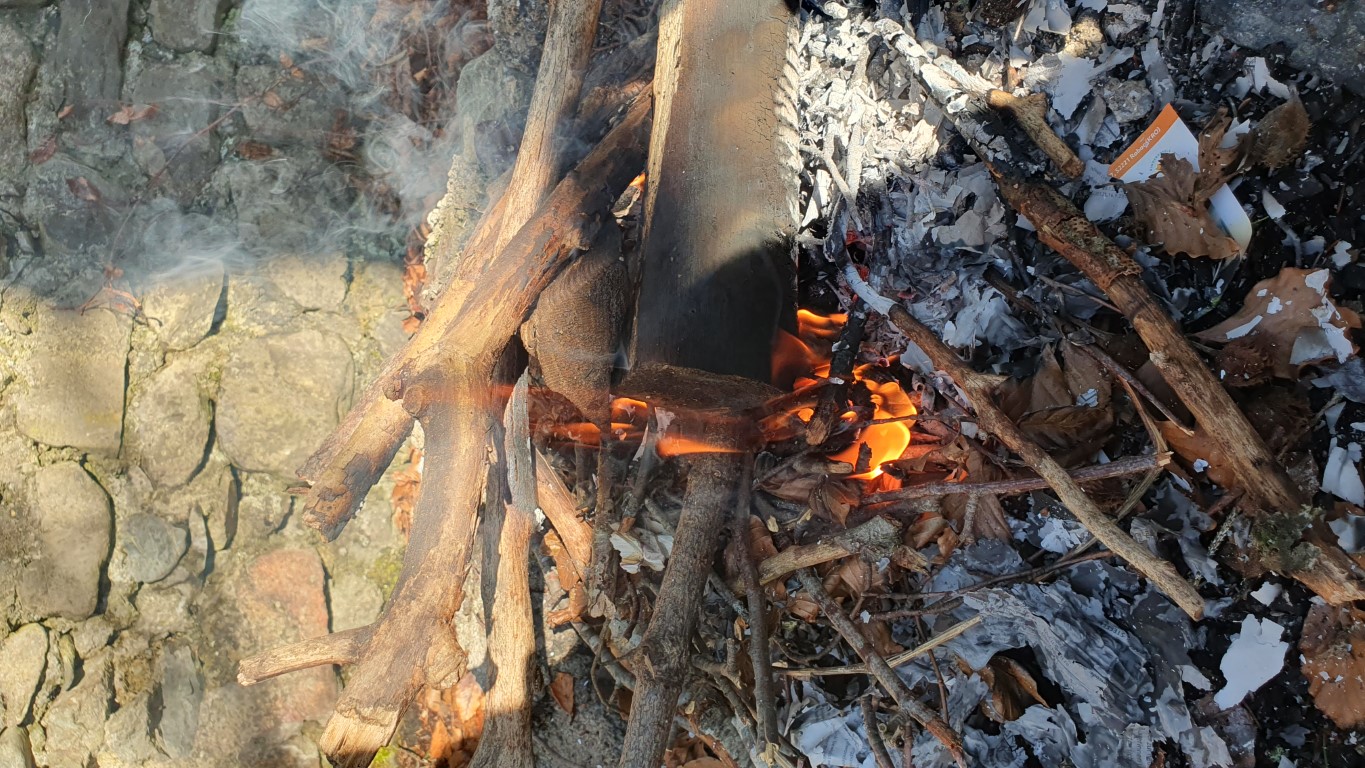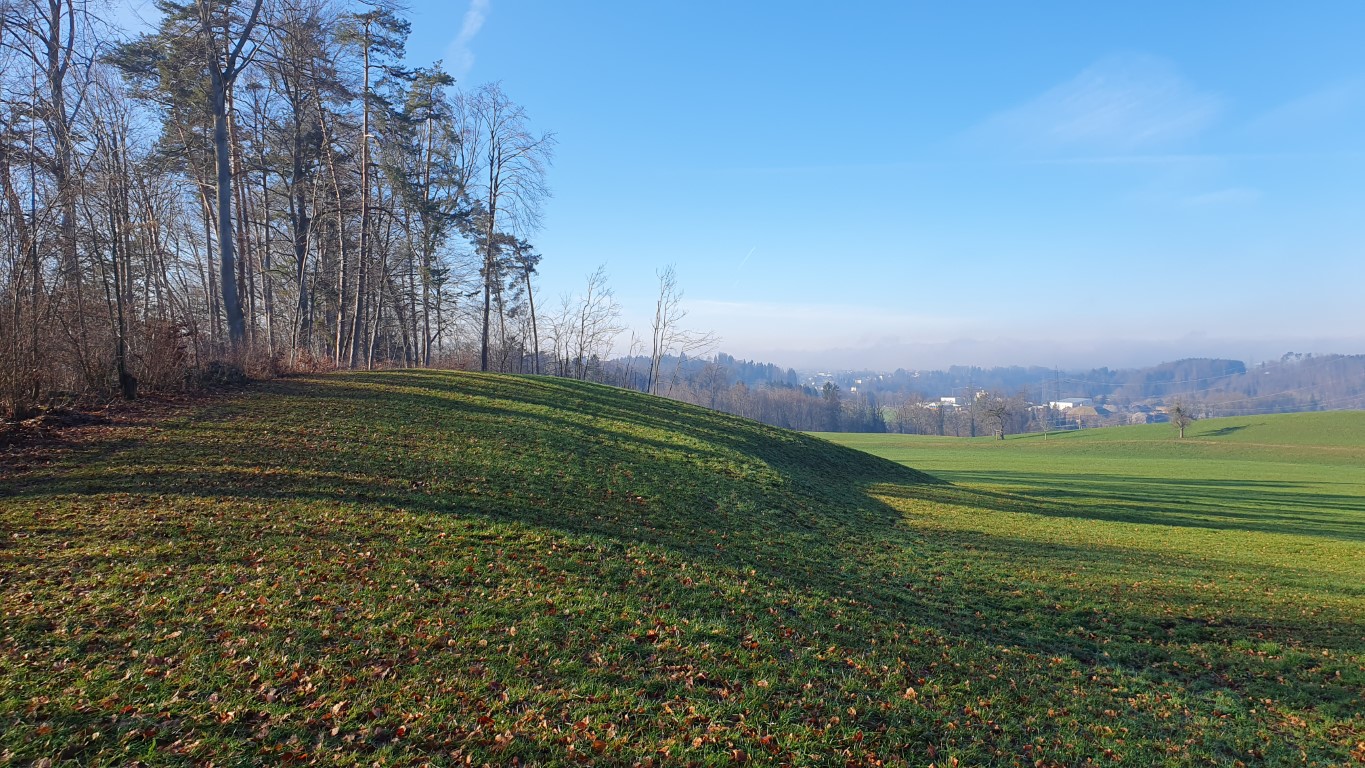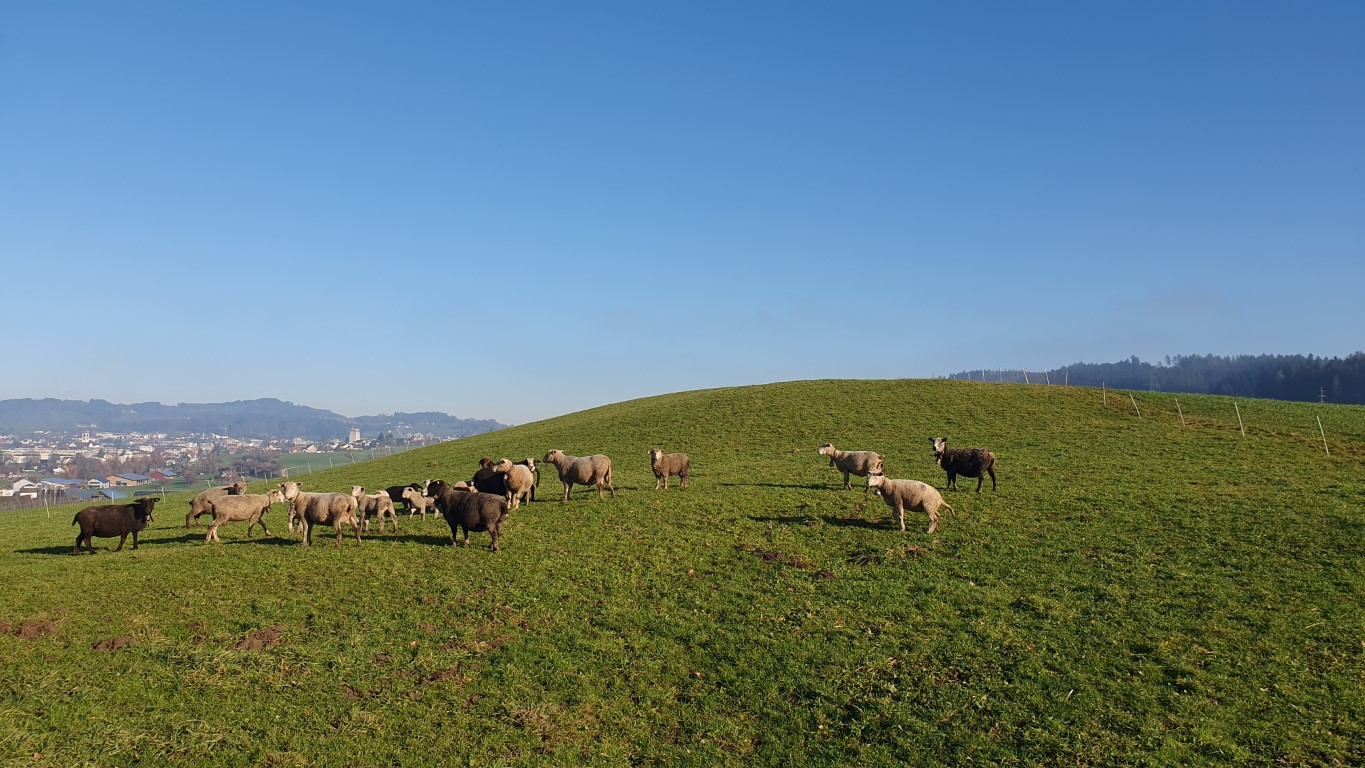Perched on a majestic rocky outcrop, the castle guards the northern bank of the picturesque Glatt river. Its location, south of the idyllic Espel biotope and along the picturesque railway line between Flawil and Gossau, is a testament to past splendor and power. Not far from the mysterious Glatt gorge and the legendary Columbans cave, only a few silent remains of the once magnificent walls that once housed life and stories remain.
background
The castle, probably built in the first half of the 13th century, was once the residence of the Gielen von Glattbrugg family. In 1244 it became part of the foundation of Knight Rudolf Giel von Glattbrugg for the Magdenau monastery, but the family continued to manage it, probably as a fief. In 1341 the castle was rebuilt by the family. For Knight Rudolf II Giel von Glattbrugg, founder of the Magdenau monastery, the estate on which the previous building, the "castrum Helfinberc", once stood was part of his foundation. It seems that the castle was already dilapidated at that time. From 1341 to 1388 a side branch of the family is known that called itself "Giel von Helfenberg". However, by 1388 at the latest the Gielen transferred the castle to the Abbey of St. Gallen.
From then on, the abbey administered Helfenberg through its servants. In 1401, the castle was besieged by the surrounding peasants, which ultimately led to the outbreak of the Appenzell War. The castle was destroyed by the rebellious peasants in 1407 and, as a result of landslides, most of it fell into the Glatt ravine.
A first excavation took place between 1935 and 1937. In 1939 the ruins were acquired by the Oberberg cooperative in Gossau. The remaining walls were secured and conserved in 1964/1965, and the most recent renovation work took place in 2010.
From the ruins of the complex that are visible today, only a few conclusions can be drawn about its former appearance. Part of the rampart with the foundations of a small building has been preserved, which may have served as a kennel. The part of the ruins facing the ravine is probably the remains of a residential tower with an irregular floor plan.
Access
The ruins are freely accessible. There are parking spaces in front of the railway line.


